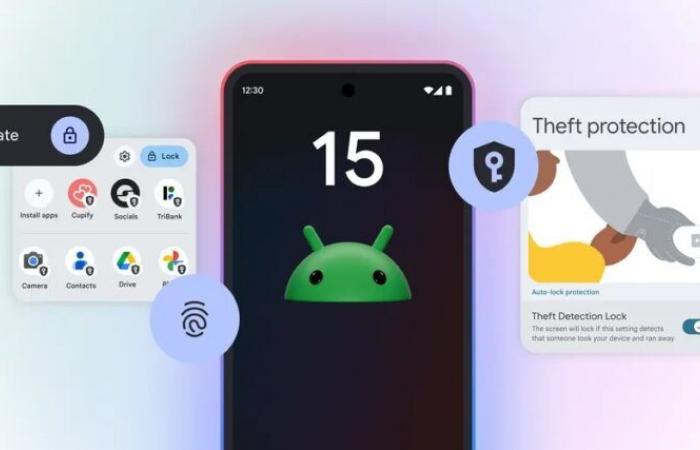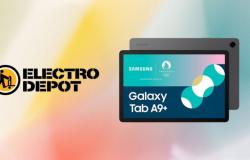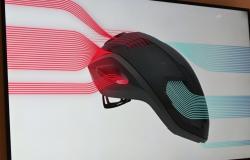With the arrival of Android 15, Pixel range smartphones benefit from a set of new features and improvements that strengthen their user experience. One of the main developments concerns the optimized management of artificial intelligence, particularly visible with the deeper integration of the voice assistant. This becomes more proactive, anticipating the user’s needs, particularly for the management of common tasks such as scheduling appointments or managing notifications.
Android 15 also brings increased customization to the user interface through dynamic widgets that adapt based on user habits, providing real-time information. Additionally, the new notification management system becomes smarter, with the ability to better filter notifications based on their importance, helping to reduce distractions.
In terms of security, this version introduces improvements in data protection, in particular thanks to stronger file encryption and better management of application access authorizations. An anti-theft snatch function is also integrated. Finally, the update improves power management, optimizing the consumption of background applications, which should extend the battery life of smartphones compatible with Android 15, such as the Pixel 9, Pixel 9 Pro and Pixel 9 Pro XL.
Design and organization of photo sensors
In terms of design, the three smartphones in the Pixel range share a similar aesthetic, with a strip on the back that occupies almost the entire width of the device to integrate the photo sensors. This gives the Pixel 9, 9 Pro and 9 Pro XL a distinct and modern visual signature. On all these models, the sensors are arranged horizontally, which gives a balanced and neat appearance. However, the Pixel 9 Pro and the 9 Pro XL are distinguished by the integration of an additional temperature sensor on the back, absent from the Pixel 9. Regarding the profiles of the smartphones, they are all flat with slightly rounded corners, promoting a comfortable grip. As for available colors, the Pixel 9 comes in Porcelain, Black, Pink, and Almond Green, while the Pixel 9 Pro and 9 Pro XL come in Porcelain, Pink, Sage Green, and Volcanic Black. The frames of all three models are made of glass, adding a premium touch to their overall look.
Regarding dimensions, the Pixel 9 is the most compact while the Pixel 9 Pro and 9 Pro XL are more imposing. Weight-wise, the Pixel 9 is also the lightest while the Pixel 9 Pro and 9 Pro XL are slightly heavier. If you prefer a larger screen, the Pro models offer more generous dimensions.
As for the batteries, the Pixel 9 has a capacity of 4700 mAh, while the Pixel 9 Pro and 9 Pro XL are equipped with a larger 5060 mAh battery. The latter should therefore offer better autonomy in intensive use. In terms of charging speed, the Pixel 9 supports 30 watts of wired charging, compared to 37 watts for the Pixel 9 Pro XL and 30 watts for the Pixel 9 Pro. All models support wireless charging at up to 23 watts, as well as reverse charging, which allows you to charge other devices.
Which is the most powerful and which is the best screen?
All the selected models are equipped with the same processor, the Tensor G4, but the Pixel 9 Pro and 9 Pro XL benefit from 16 GB of RAM, compared to 12 GB for the Pixel 9. In terms of storage, the Pixel 9 is available in 128 GB or 256 GB versions, while the Pro offers more options, going up to 1 TB. Neither model allows storage expansion via a micro SD card. So, the Pixel 9 Pro and Pro XL outperform the Pixel 9 in terms of raw power and storage flexibility.
On the screen side, the differences are also notable. The Pixel 9 has a 6.2-inch AMOLED display, while the Pro and Pro XL offer larger 6.8-inch displays, also AMOLED. In terms of brightness, the Pixel 9 reaches a peak of 1800 cd/m², compared to 2000 cd/m² for the Pro models, with the possibility of reaching 3000 cd/m² under certain conditions. The refresh rate is identical for all models, at 120 Hz, guaranteeing appreciable visual fluidity. However, the Pro’s brighter and larger screens are ideal for multimedia consumption.
What configurations for photos and what connectivity?
On the photography side, the Pixel 9 integrates two sensors: a 50-megapixel main one with optical stabilization, and a 48-megapixel ultra-wide-angle sensor, capable of capturing photos in macro mode. In comparison, the Pixel 9 Pro and 9 Pro XL add a third 48-megapixel telephoto sensor, with 5x optical zoom and optical stabilization, making them more versatile devices for photography enthusiasts. On the front, the Pixel 9 has a 10.5-megapixel selfie sensor, while the Pro offers an impressive 42-megapixel sensor, promising better quality for self-portraits.
In terms of connectivity, all models support the Wi-Fi 7 standard, are 5G compatible, have NFC technology and Bluetooth 5.3. None of the models offer an audio jack or an infrared transmitter. They are all IP68 certified, guaranteeing protection against water and dust. The fingerprint reader is integrated under the screen on each model, making it easier to unlock the device.






